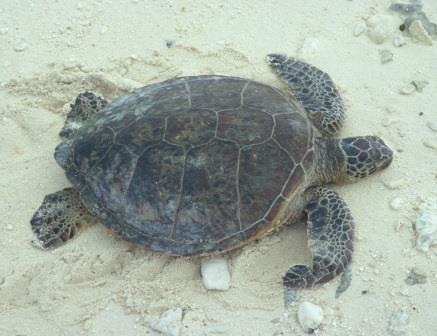One of the most remarkable features of the sea (marine) turtles that inhabit the tropical and subtropical waters of the world is their homing ability. Throughout the year, sea turtles swim huge distances, often more than 1600 kilometers (1000 miles), in search of food. However, when it is time to give birth, the females return to the same beach nesting grounds where they were born. Only the females go back to these so-called natal beaches; once the males have hatched and crawled into the sea, they almost never return to shore. See also: Chelonia; Marine ecology; Migratory behavior; Turtle origins

How do these sea creatures accomplish this incredible homing feat? Decades of studies have established that diverse animal species, including birds and butterflies, can sense direction by detecting the magnetic field of the Earth. Conclusive evidence has determined that sea turtles, too, use the magnetic field for orientation. For example, investigations have shown that sea turtles can perceive the angle that the local magnetic field lines make with respect to the surface of the Earth. Because this angle is a function of a turtle's distance from the magnetic poles, the animal has a sense of latitude. Sea turtles can also detect the intensity of the local magnetic field. Because different geographical regions are typically marked by signature magnetic field intensities, the ability to perceive those intensities can provide the turtles with navigational landmarks. In studies conducted over the course of 19 years, loggerhead sea turtles were seen to gradually shift their nesting grounds along with the natural drift of the magnetic field. Thus, sea turtles can learn the magnetic topography of the areas where they live and use those magnetic signposts to navigate to specific geographic locations. See also: Animal navigation; Geomagnetic variations; Geomagnetism
Seven species of sea turtles are extant: flatback (Natator depressa or Natator depressus), green turtle (Chelonia mydas), hawksbill (Eretmochelys imbricata), Kemp's ridley (Lepidochelys kempii), leatherback (Dermochelys coriacea), loggerhead (Caretta caretta), and olive ridley (Lepidochelys olivacea). All are endangered or vulnerable species, and their survival depends on ecosystems that are fragile and threatened by human activities. The most serious obstacles to the sea turtles' survival are marine pollution, including oil spills; entanglement in marine debris, such as plastic bags; habitat destruction; coastal-area development; illegal poaching; and beach erosion and rising sea levels (both linked to global climate change), which reduce the size of nesting beach areas. See also: Climate change and sex determination; Climate modification; Endangered species; Global climate change; Marine conservation; Population ecology; Population viability; Species and global climate change





